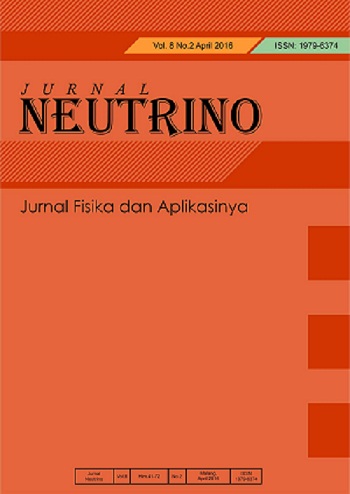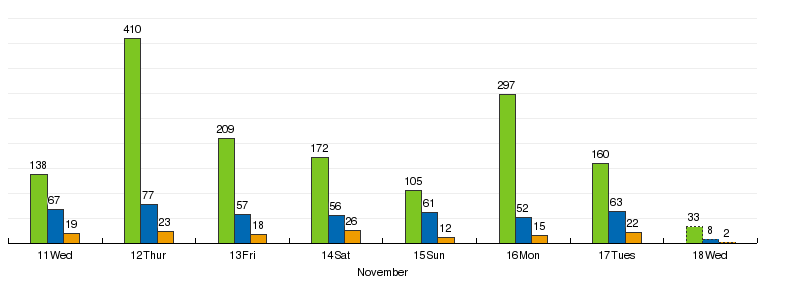CHARACTERIZATION OF RESERVOIR SANDSTONES USING LOG ANALYSIS TECHNICQUE EXTENDED ELASTIC IMPEDANCE IN FIELD X
Abstract
Extended Elastic Impedance (EEI) Analysis first introduced by Whitcombe (2002) was used for the predicting lithology review and fluid in a hydrocarbon reservoir. EEI is an application of an angle that is applied in a certain range until the zone of interest (ZoI) clarified. EEI is an interesting subject to observe and very useful to be applied on seismic attributes with its ability to predict lithology and fluid where acoustic impedance of sands and shale looks almost in the same pattern. Applying this method allows the result of the sand and shale anomalies to be seen in a different way. EEI has the ability to review the estimation of elastic parameters. In this research, It used multiple parameters which analyzed directly by using an original log from well that are a / ratio, pseudo gamma ray, pseudo NPHI, pseudo resistivity. The results of this study indicate that the use of angle optimization on EEI can interpret the intended zone of interest.
Keywords
Full Text:
PDFReferences
Singh VB, Baid VK, Biswal S, Subrahmaniam D. Acoustic to Elastic Impedance – A New Tool for Reservoir Characterisation. 1998;(1374):1374–9.
Francis A, Hicks GJ. Porosity and Shale Volume Estimation for the Ardmore Field Using Extended Elastic Impedance. Eage 68th Conf Exhib. 2006;(June 2006):1–5.
Fernandus A. Sandstone Reservoir Characterization In Renax Fields with Extended Elastic Impedance Inversion. Bandung Institute of Technology; 2008.
Hadi JM. Extended Elastic Impedance inversion for lithology and fluid identification review in Sandstone Gas Reservoir in Field North Sumatera Basin Walawala. Bandung Institute of Technology; 2009.
Woelandari D. The use of Extended Elastic Impedance Method for Separating Lithology and Fluid: A Case Study of Carbonate Reservoirs in the field “X” in the North West Java. University of Indonesia; 2010.
Shahri SG. Application of Extended Elastic Impedance (EEI) to improve Reservoir Characterization. 2013;(June).
Sismanto. Rock physics: Estimation Approach Based Air Permeability and Saturation Seismic Data. Yogyakarta: Graha Ilmu; 2013. 3-18 p.
Russell B. Extended Elastic Impedance using HRS-9.
Castagna JP, Batzle ML, Eastwood RL. Relationships between compressional‐wave and shear‐wave velocities in clastic silicate rocks. GEOPHYSICS. 1985 Apr;50(4):571–81.
Avseth P, Mukerji T, Mavko G. Quantitative Seismic Interpretation: Applying Rock Physics Tools to Reduce Interpretation Risk. Cambrigde University Press; 2005.
Sarjono, Sardjito. Hydrocarbon Source Rock Identification in the South Palembang Sub-Basin. In 1989. p. 427–66.
Exploration Department of Pertamina. Well Report. Sumatera; 2000.
Lin J, Hsu S, Lin AT, Yeh Y, Lo C. Vp/Vs distribution in the northern Taiwan area : Implications for the tectonic structures and rock property variations. Tectonophysics. 2016;692:181–90.
Mavko G, Mukerji T, Dvorkin J. The Rock Physics Handbook : Tools for Seismic Analysis of Porous Media. Second. Stanford University, USA: Cambrigde University Press; 2009. 74 p.
Hosseini Shoar B, Javaherian A, Keshavarz Farajkhah N, Seddigh Arabani M. Reflectivity template, a quantitative intercept-gradient AVO analysis to study gas hydrate resources - A case study of Iranian deep sea sediments. Mar Pet Geol. 2014;51:184–96.
Rutherford SR, Williams RH. Amplitude‐versus‐offset variations in gas sands. GEOPHYSICS. 1989 Jun;54(6):680–8.
Russell BH, Lines LR, Hirsche KW, Peron J, Hampson DP. The AVO modelling volume. Explor Geophys. 2001;32(4):264.
DOI: https://doi.org/10.18860/neu.v10i1.4233
Refbacks
- There are currently no refbacks.
Copyright (c) 2018 Dhony Widyasandy, Adi Susilo, Fatkhul Mu'in

This work is licensed under a Creative Commons Attribution-NonCommercial-ShareAlike 4.0 International License.
Editorial Office of Jurnal Neutrino:
Department of Physics, Faculty of Sains and Technology, Universitas Islam Negeri Maulana Malik Ibrahim Malang, Indonesia
B.J. Habibie 2nd Floor
Gajayana st. No.50 Malang 65144
Telp. +62 813-4090-1818
Email: neutrino@uin-malang.ac.id
This work is licensed under a Creative Commons Attribution-NonCommercial-ShareAlike 4.0 International License










